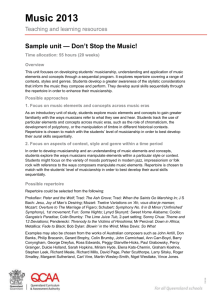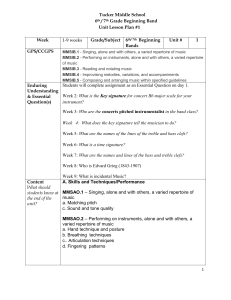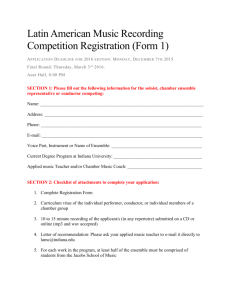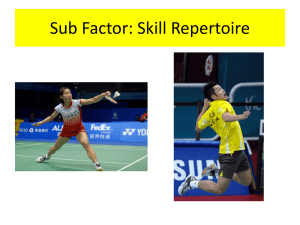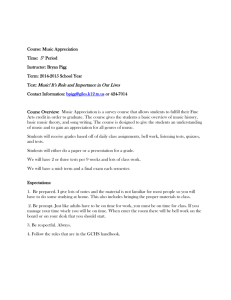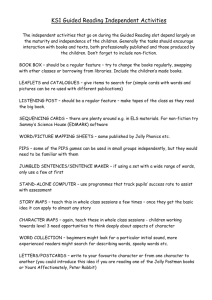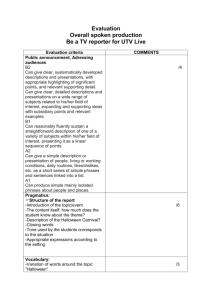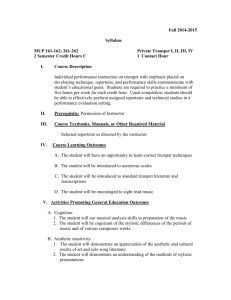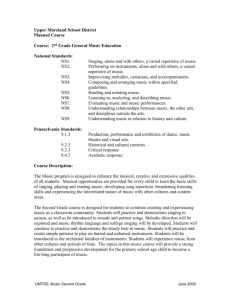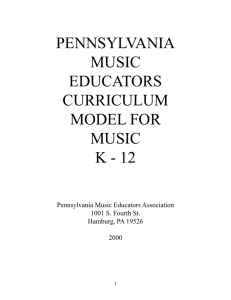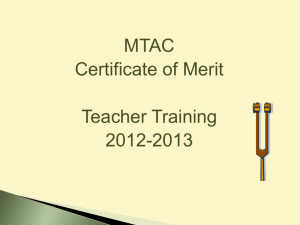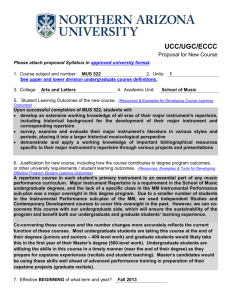Sample unit - Grand Designs - Queensland Curriculum and
advertisement
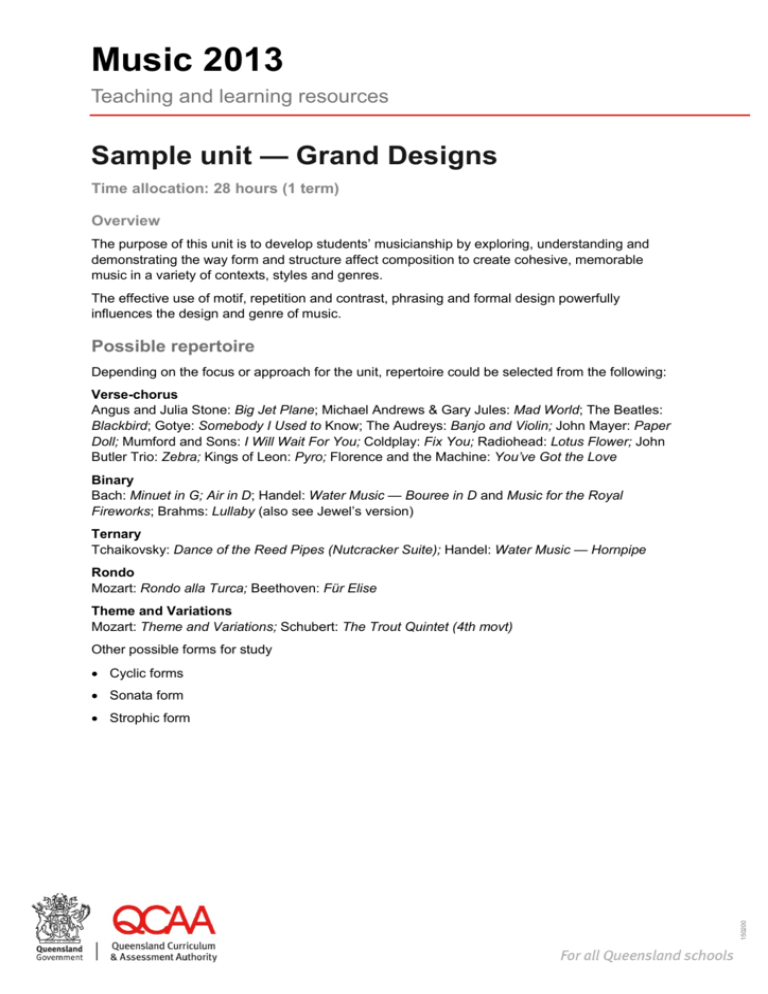
Music 2013 Teaching and learning resources Sample unit — Grand Designs Time allocation: 28 hours (1 term) Overview The purpose of this unit is to develop students’ musicianship by exploring, understanding and demonstrating the way form and structure affect composition to create cohesive, memorable music in a variety of contexts, styles and genres. The effective use of motif, repetition and contrast, phrasing and formal design powerfully influences the design and genre of music. Possible repertoire Depending on the focus or approach for the unit, repertoire could be selected from the following: Verse-chorus Angus and Julia Stone: Big Jet Plane; Michael Andrews & Gary Jules: Mad World; The Beatles: Blackbird; Gotye: Somebody I Used to Know; The Audreys: Banjo and Violin; John Mayer: Paper Doll; Mumford and Sons: I Will Wait For You; Coldplay: Fix You; Radiohead: Lotus Flower; John Butler Trio: Zebra; Kings of Leon: Pyro; Florence and the Machine: You’ve Got the Love Binary Bach: Minuet in G; Air in D; Handel: Water Music — Bouree in D and Music for the Royal Fireworks; Brahms: Lullaby (also see Jewel’s version) Ternary Tchaikovsky: Dance of the Reed Pipes (Nutcracker Suite); Handel: Water Music — Hornpipe Rondo Mozart: Rondo alla Turca; Beethoven: Für Elise Theme and Variations Mozart: Theme and Variations; Schubert: The Trout Quintet (4th movt) Other possible forms for study • Cyclic forms • Sonata form 150200 • Strophic form Possible learning experiences Learning experiences are developed based on the purpose and context of the unit and the repertoire selected. • analysing and identifying how cohesion in composition is achieved through the use of the music elements of structure (e.g. motif, repetition, variety, contrast, development and unity) • analysing techniques in creating memorable melodies • analysing and evaluating music to determine the relationships between music elements, concepts and structure in selected music • developing aural skills through notating rhythms, melodies and chord progressions of studied repertoire • developing aural skills through identifying form and structure in selected repertoire • developing aural skills by identifying cadential patterns and phrasing in selected repertoire • composing melodies in 4-bar phrases, to given chord progressions • creating chord progressions that support 4-bar phrases and cadence points • creating melodic motifs • using and applying available software to explore methods of manipulating structure • developing word setting skills • selecting and applying music elements and concepts in composition • demonstrating composition techniques in the creation of their own works, especially in the use of motif, repetition, contrast, balanced phrasing, verse chorus form, use of structural chord progression • synthesising and communicating music ideas and stylistic characteristics to create and perform repertoire illustrating specified form and structure • perceiving and interpreting music elements and concepts in repertoire and music sources • interpreting and applying music elements and concepts in performance • creating group arrangements of songs for performance • demonstrating composition and performance skills and techniques in creating and performing music Syllabus dimensions and objectives will be delivered through learning experiences over the unit of work, as per these examples. Music 2013 Sample unit — Grand Designs Queensland Curriculum & Assessment Authority February 2015 Page 2 of 3 Assessment tasks are designed from the purpose and context of the unit and should be aligned to the identified dimensions and objectives. Possible assessment Assessment technique Composition Possible tasks Compose a song for voice, piano and guitar, using verse-chorus form. Students may use a given text or write their own lyrics. Compose a work using one of the studied forms. Dimension to be assessed Composition The dimension Composition involves the creation of music by combining music elements and concepts in a range of contexts, styles and genres. It entails innovation through exploring and experimenting with sound to synthesise and express personal music ideas and enhance musicianship in Musicology and Performance. Objectives By the conclusion of the course of study, students should: • select and apply music elements and concepts in the creation of their own works • demonstrate composition techniques in the creation of their own works • synthesise and communicate music ideas and stylistic characteristics to create their own works. Assessment conditions Year 11: A minimum of 16 bars or approximately 30 seconds in length. Year 12: A minimum of 32 bars or approximately 1 minute in length. Assessment technique Performance Possible task Perform a work, as soloist or in ensemble, which illustrates a studied form. This may be a performance of the student’s own work. Dimension to be assessed Performance The dimension Performance involves the interpretation of music elements and concepts through playing, singing and/or conducting in context. It entails communicating music to audiences through the synthesis of music ideas, stylistic characteristics and practices, while enhancing musicianship in Composition and Musicology. Objectives By the conclusion of the course of study, students should: • interpret and apply music elements and concepts in performance • demonstrate performance skills and techniques related to contexts • synthesise and communicate music ideas and stylistic characteristics to create performances. Assessment conditions Years 11 and 12: Approximately three minutes in length. Music 2013 Sample unit — Grand Designs Queensland Curriculum & Assessment Authority February 2015 Page 3 of 3
